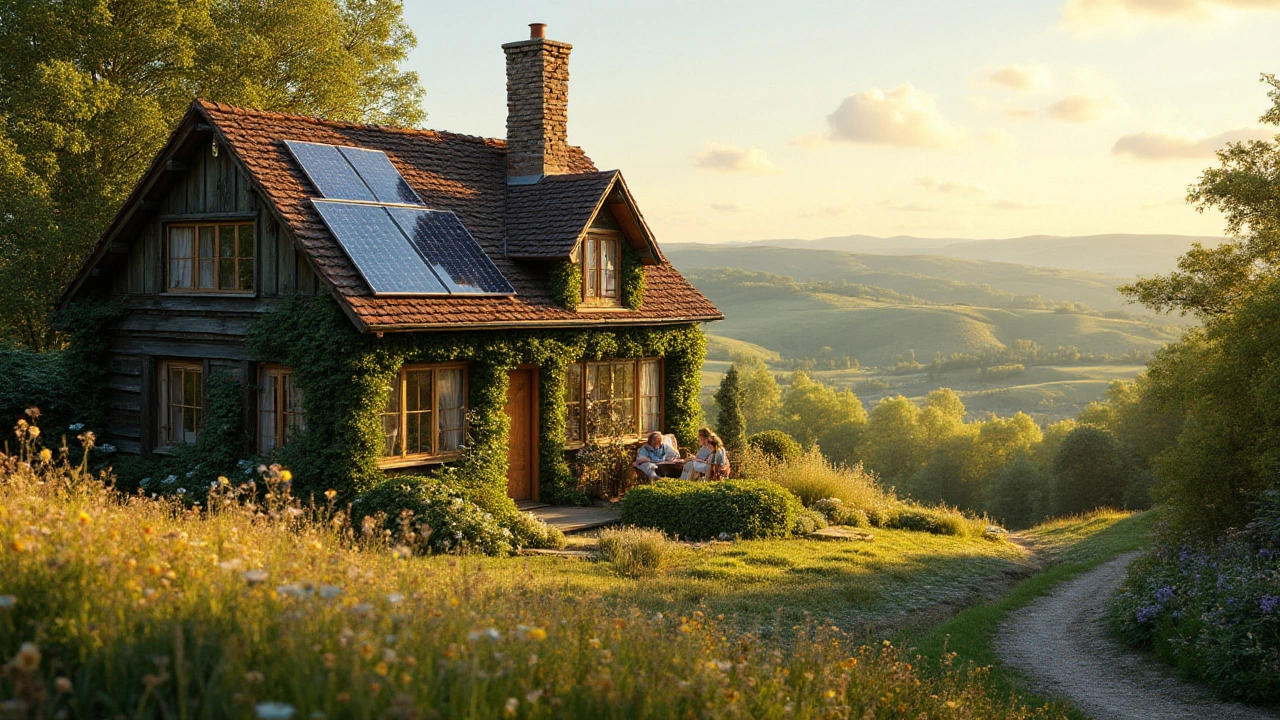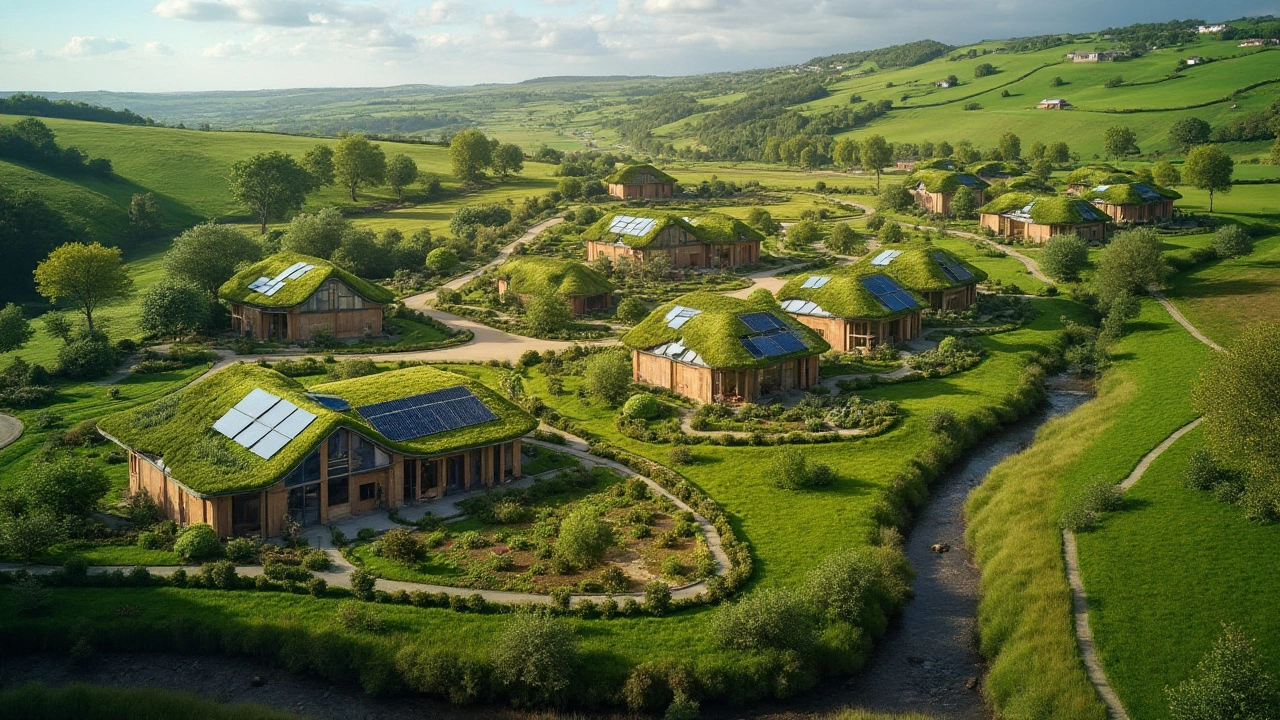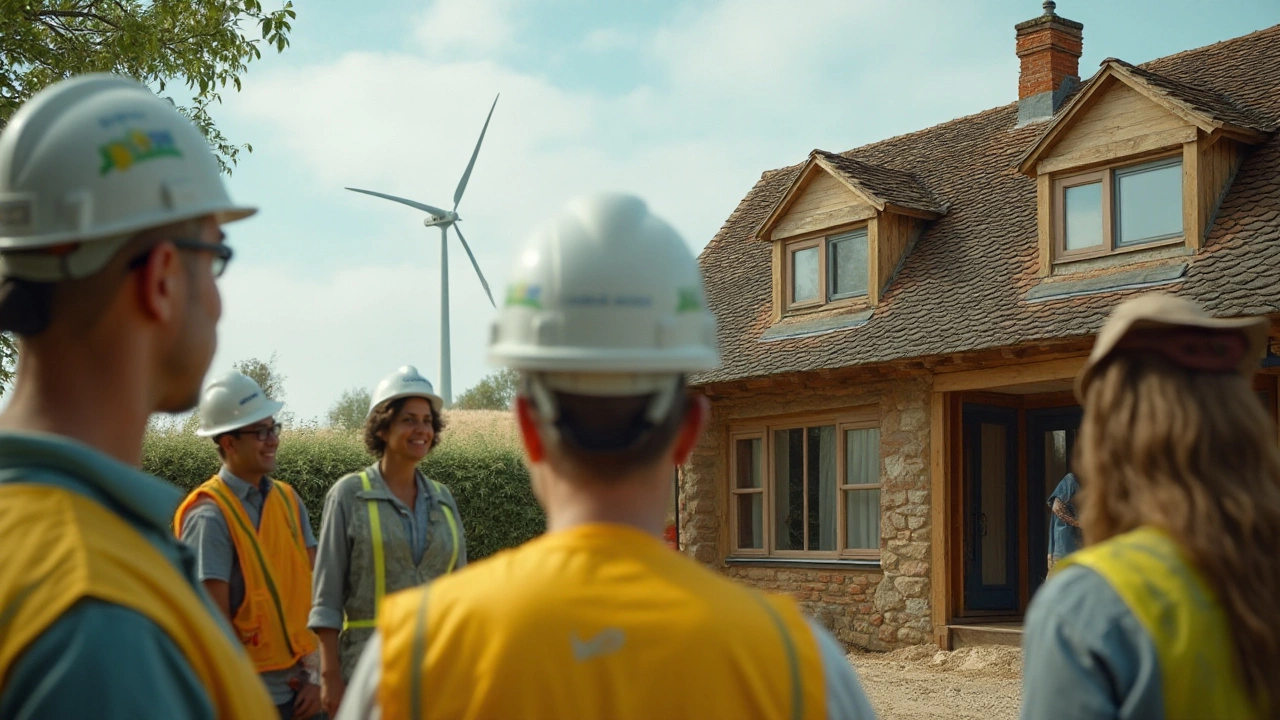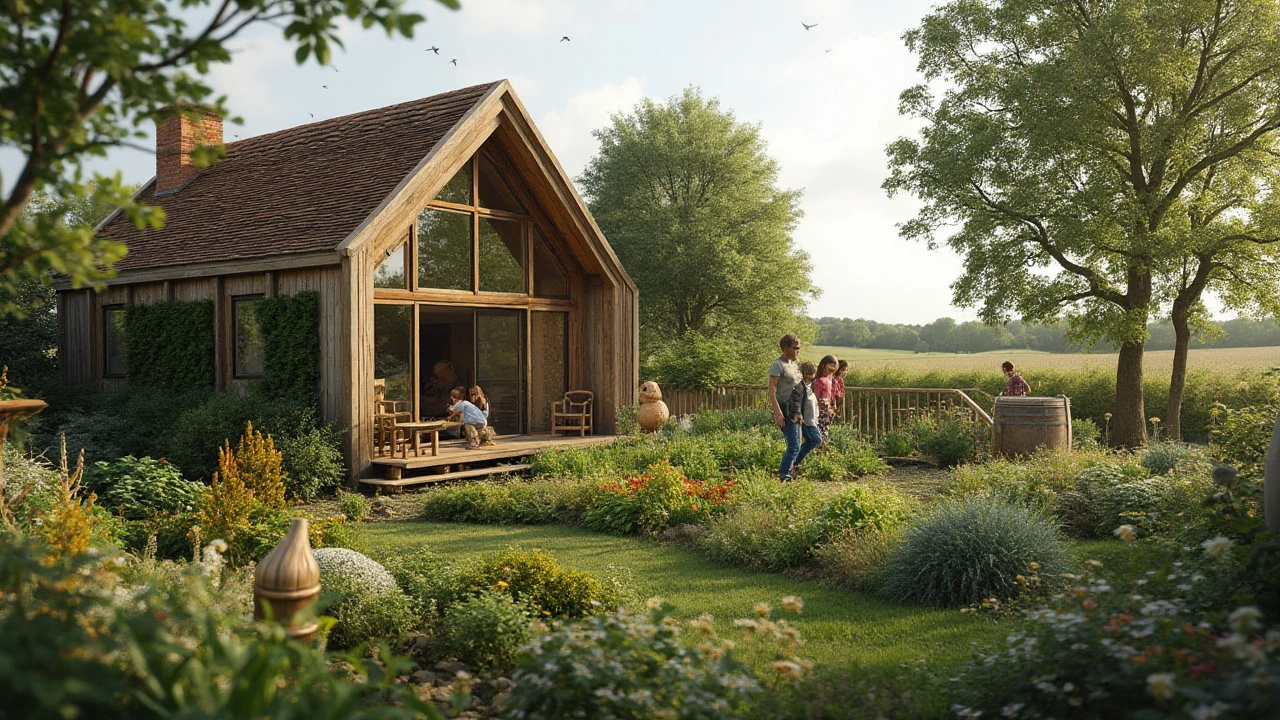Choosing the Ideal Location for Your Eco-Friendly Dream Home

Imagine waking up in a home that not only minimizes its impact on the environment but is also harmoniously integrated with nature. The journey to creating such a dwelling begins with selecting the right location, a decision as crucial as the design itself.
There are a multitude of factors to consider that influence both the sustainability and functionality of an eco-friendly house. Prospective green homeowners must weigh aspects such as local climate patterns, availability of natural resources, and even the neighborhood's commitment to sustainability.
This thoughtful approach not only maximizes the environmental benefits of your new abode but also enhances your quality of life, creating a sanctuary that respects the planet as much as it nurtures its inhabitants. Dive in to explore how geography and community play pivotal roles in your quest for a greener future.
- Climate Considerations
- Access to Natural Resources
- Community Impact and Support
- Regulations and Incentives
Climate Considerations
Building an eco-friendly house begins with understanding the intricate dance of climate and architecture. The climate of a specific location significantly influences the design and materials required for a truly sustainable home. In regions with abundant sunlight, incorporating solar panels can be a game-changer, dramatically reducing reliance on traditional power grids. In fact, harnessing solar energy isn't just about energy efficiency; it's about tapping into one of the planet’s most profound and renewable resources. Conversely, in areas where winters are harsh and snow blankets the landscape, homes need to maximize heat retention. This means using materials that provide superior insulation, such as straw bales or structurally insulated panels, which not only keep homes warm but also reduce the carbon footprint.
Humidity levels present another layer of consideration. In places where humidity is high, installations must focus on preventing mold and moisture issues, which can compromise both the health of inhabitants and the integrity of the building. Ventilation systems become a critical component here, designed not just for comfort, but also to sustainably manage air quality. Pairing passive designs—like cross-ventilation and strategically placed windows—with mechanical solutions ensures your home breathes easily, no matter the season. A place with low humidity, on the other hand, might allow for natural cooling techniques like adobe walls, which absorb heat during the day and release it at night, balancing temperature extremes.
It's also essential to consider the local wind patterns, which can affect everything from the stability of solar panels to the home's thermal performance. In wind-heavy areas, designs often incorporate windbreaks—strategically placed hedges or fences that reduce wind speeds near the house. These reduce heating costs and contribute to environmental aesthetics. Additionally, when choosing roofing materials, selecting against predominant wind directions helps protect the structure and enhances the durability of sustainable materials. According to the Pacific Northwest National Laboratory, integrating wind energy can increase a building's efficiency by up to 20%.
Rainfall is a critical climatic aspect, particularly when considering water harvesting techniques. In areas with substantial rainfall, a well-designed rainwater collection system can provide most, if not all, of the household’s water needs, reducing reliance on municipal sources and promoting self-sufficiency. However, these systems require careful planning; gutters and storage tanks need to be optimized to capture and preserve water quality. Local climate adaptability is all about leveraging what's naturally available to create homes that are in harmony with their environment. As architect Jean Nouvel wisely expressed,
"Each new situation requires a new architecture."Building with climate in mind isn’t just an energy-saving strategy; it’s a pledge towards a more mindful and immersive way of living.

Access to Natural Resources
When setting out to build a eco-friendly house, tapping into the abundance of natural resources in the environment is a vital aspect of sustainable living. From solar energy to water supplies, the resources available to your chosen land can significantly bolster your house’s green credentials, but they require careful evaluation and planning. Many believe that harnessing these natural assets effectively can not only reduce utility costs but also improve your home's overall efficiency.
One of the primary considerations should be sunlight exposure. A location basking in ample sunlight is ideal for installing solar panels, which are a cornerstone in generating renewable energy for modern sustainable living. The best positions for solar panels usually align with the equator's direction, maximizing energy absorption throughout the day. With climate change impacting weather patterns, however, it’s crucial to assess seasonal sun exposure data before making a decision.
Wind energy also offers a sustainable alternative in powering a home, particularly in areas known for consistent breezes. A small wind turbine might seem an unlikely partner to a home, yet they can be remarkably effective in cutting down energy expenses while being seamlessly integrated into your home's design. Conducting wind speed tests or accessing local meteorological data can provide comprehensive insights into wind patterns in potential locations.
According to the U.S. Department of Energy, installing a wind electric system can reduce your energy bills by 50% to 90%, which is an attractive prospect for many eco-conscious homeowners.
Water resources are equally crucial when considering where to place your green home. The ability to harvest rainwater is incredibly advantageous, particularly in regions prone to periodic droughts. Some locations offer natural springs or streams, which can be incorporated into a water supply system with appropriate purification measures. Additionally, a site with natural shade or forests can help maintain cooler temperatures and reduce reliance on air conditioning, saving water used in cooling systems.
This delicate balance of utilizing local resources extends to materials. Whenever possible, sourcing building materials locally can diminish carbon footprints and support regional economies. Timber from nearby certified forests or stones from local quarries significantly enhance the sustainability score of a construction project, marrying the aesthetic appeal with an eco-friendly ethos.
While the lure of a resource-rich environment is undeniable, it's essential to factor in biodiversity. Striking a harmony between human habitation and local ecosystems ensures that the area remains vibrant and resilient for years to come. Choosing a piece of land that respects and preserves local flora and fauna can make your home a genuine stalwart of green eco-construction.

Community Impact and Support
When considering the logistics of building an eco-friendly house, the impact and support of the local community are often overlooked yet play a significant role in your green home journey. A supportive community can become a rich resource, providing knowledge and encouragement that can significantly ease the transition to sustainable living. Historically, communities that are aware of and invested in sustainability create a more conducive environment for eco-lovers. In regions where green living is celebrated, you often find community gardens, renewable energy cooperatives, and a commitment to recycling initiatives. This collective spirit fosters innovation and collaboration, which can be a boon when trying to integrate eco-friendly house features.
Beyond enthusiasm, the infrastructure of a community can bolster or hinder your plans. For instance, metropolitan areas such as Portland have embraced green building requirements and offer support for residents looking to go sustainable. Local governments sometimes provide incentives such as tax breaks or grants for incorporating sustainable materials or sustainable energy solutions like solar panels and rainwater harvesting systems. A sustainable living environment thrives with the backing of local policies that align with personal environmental goals. Additionally, having a network of neighbors with similar values can lead to shared services like carpooling or solar energy trades.
Yet, finding such a community isn't merely about convenience; it's about thriving. Residing in a place where people prioritize eco-friendliness can inspire long-term sustainable behaviors. According to a recent survey by the Green Building Council, more than 70% of green homeowners reported increased satisfaction when living within a like-minded community compared to traditional urban settings. In the words of sustainable architect Sarah Susanka, "Living simply and sustainably requires a community that values the earth as much as you do."
"Communities share resources wisely, reducing individual consumption while increasing collective joy."The inspiration drawn from peers can help overcome common challenges associated with green building. Events like community clean-ups, tree planting drives, or workshops provide platforms for learning and sharing.
So, as you scout locations, consider the local community's stance on sustainability. The green home location shouldn't only be practical in terms of resources and accessibility; it should actively nurture and grow the principles of sustainable living. A supportive community is more than just a pleasant bonus; it's a crucial aspect of realizing the full potential of your eco-friendly abode.

Regulations and Incentives
Crafting an eco-friendly house in the right location involves navigating a tapestry of regulations and incentives that can significantly influence the success of your green ambitions. Regulatory frameworks, often varying from one region to another, dictate the permissible extent of eco-construction practices. Local governments may impose building codes or zoning laws that demand certain eco-features or forbid particular building practices aimed at preserving the natural landscape. For instance, some areas require homes to adhere to energy conservation standards, mandating the use of renewable energy sources like solar panels or wind turbines. It's crucial to research these stipulations early in the planning stages to ensure your eco-friendly house complies and thrives within legal boundaries.
On the bright side, incentives are often put in place to encourage sustainable construction, offering substantial financial reliefs that can tilt the scales in favor of building your green home. Government programs frequently offer tax credits for energy-efficient homes, rebates for solar panel installations, or discounted permits for employing sustainable materials. These initiatives play a pivotal role in reducing the upfront costs associated with eco-construction, making the dream of owning a sustainable dwelling more accessible. The U.S. Department of Energy, for instance, offers tax incentives for energy efficiency improvements, significantly lowering the barrier to eco-conscious homebuilding.
"Embracing green building practices not only conserves natural resources but also demonstrates a commitment to leaving a positive legacy for future generations," says a prominent environmental architect.Understanding these opportunities can heavily impact your project's budget and scope. As you navigate this landscape, it's wise to consult with environmental consultants or local building authorities who can provide deeper insights into the legal and financial nuances of building specific to your intended locale. Fostering a relationship with these experts can illuminate potential challenges, guide you to available incentives, and ultimately ensure your sustainable vision is realized without unexpected roadblocks. Comprehensive planning in this domain is more than just a formality – it's a cornerstone of successfully integrating sustainable living into everyday life.
There are instances across the globe where visionary policies have not only supported green building but actively incentivized it through innovative programs. A look at international examples, like Germany's 'Energiewende' initiative, which aims to transform the country's energy sector, shows how legislative backing can propel sustainable practices into mainstream housing development. By offering grants for energy-efficient renovations, such policies set a precedent for what's achievable when legal structures align with environmental goals. Engaging with these examples can inspire homeowners to advocate for similar programs within their own regions, potentially influencing future regulations to favor eco-construction and eco-construction.